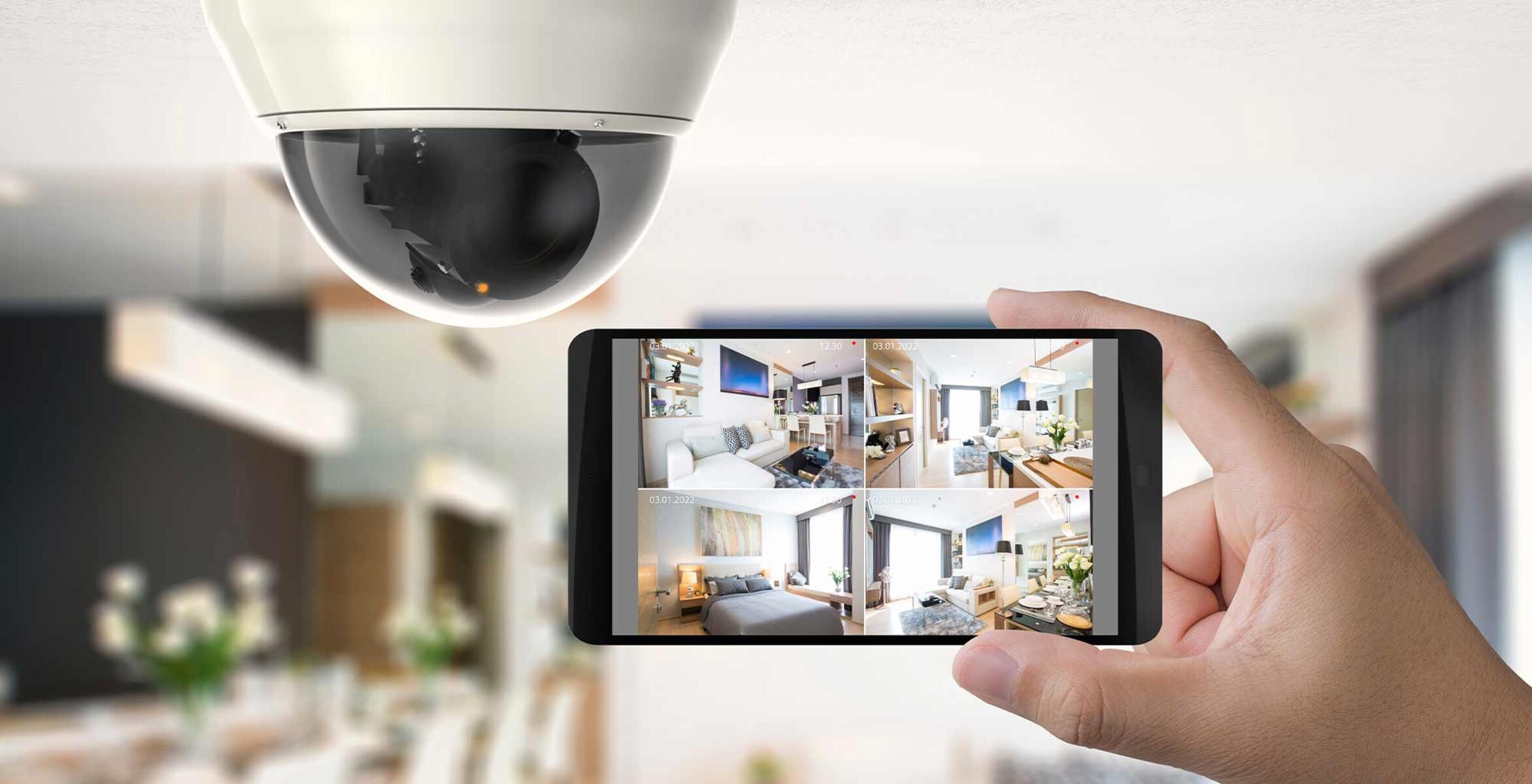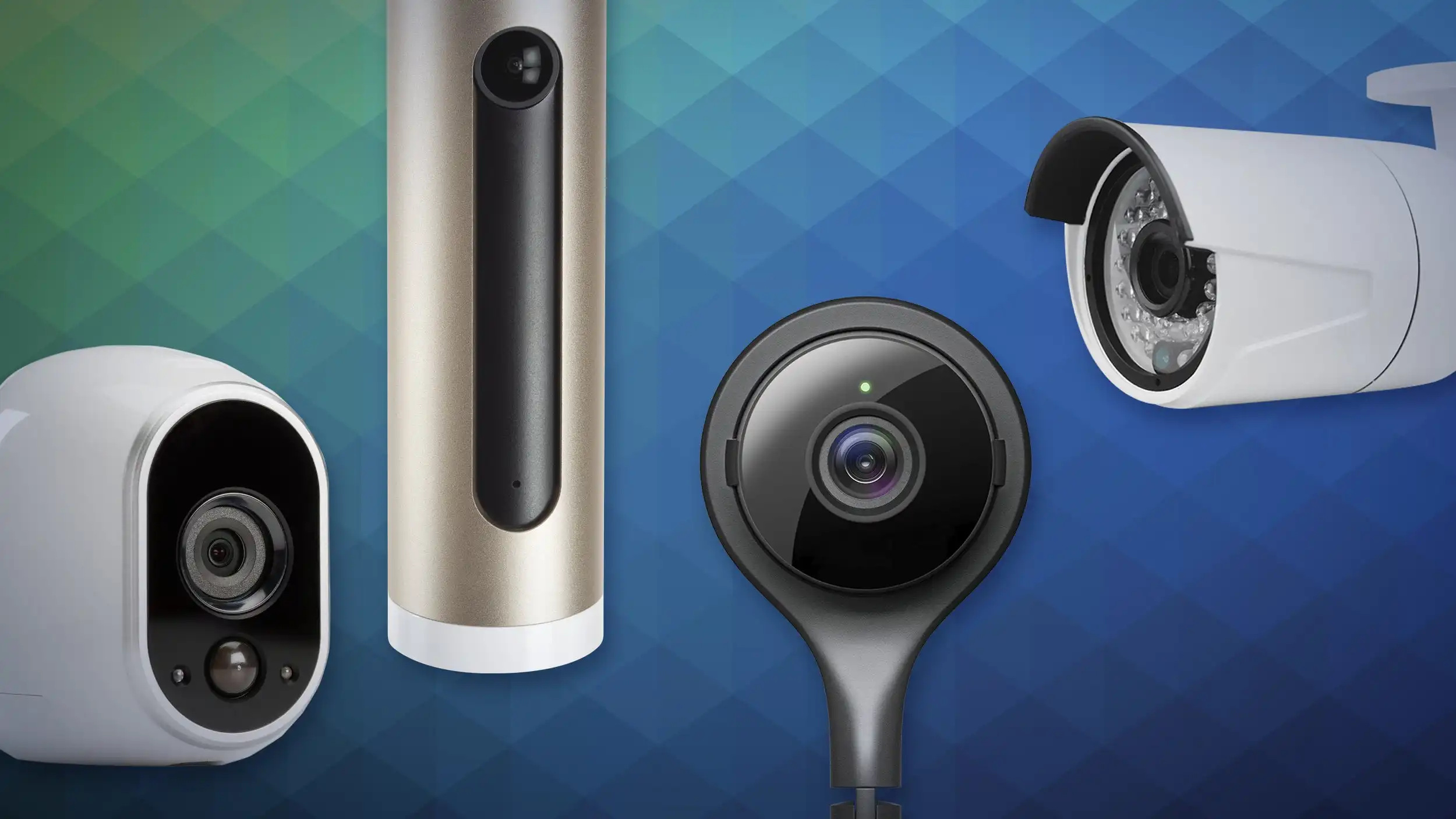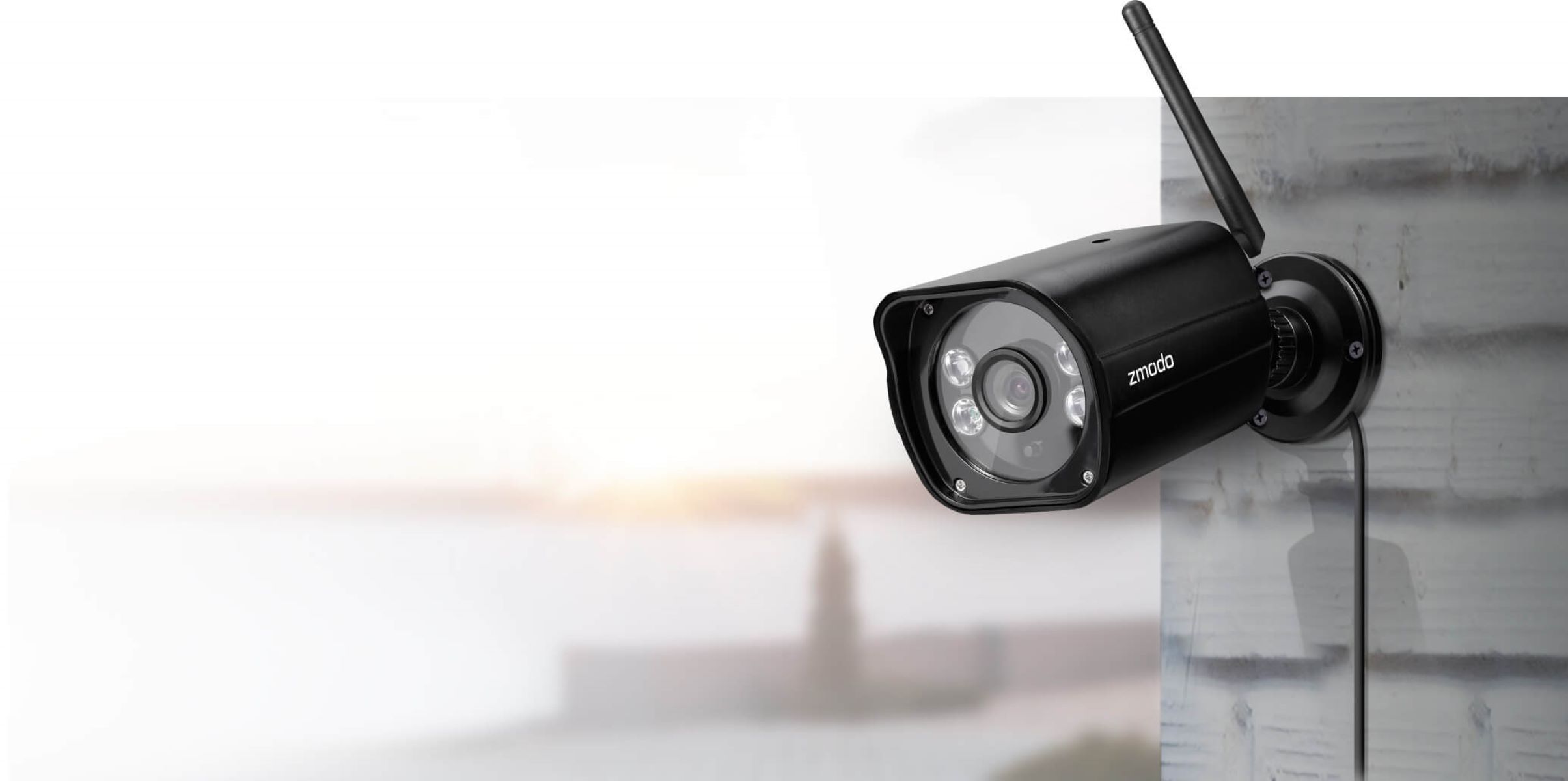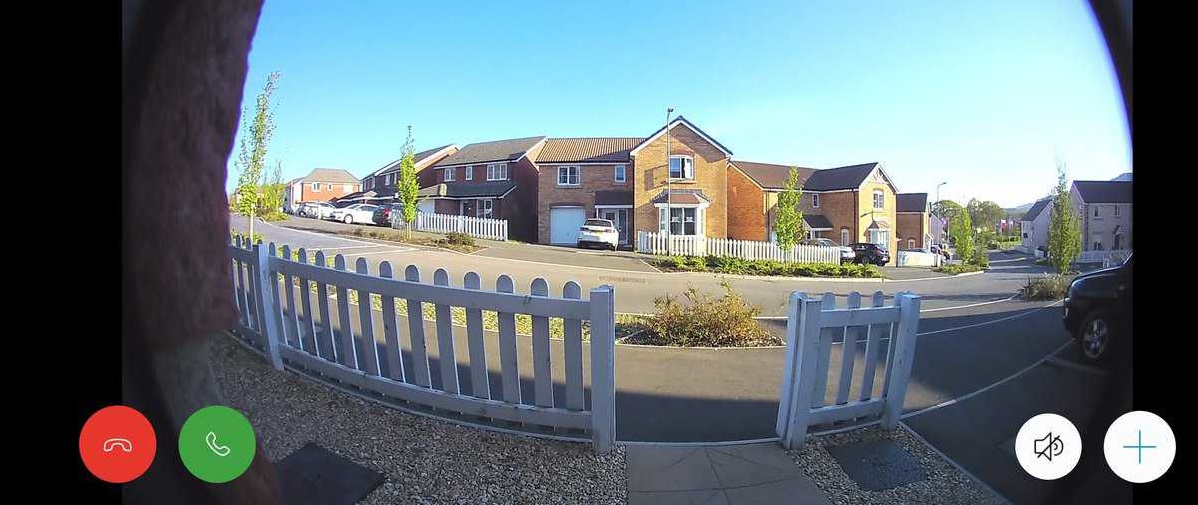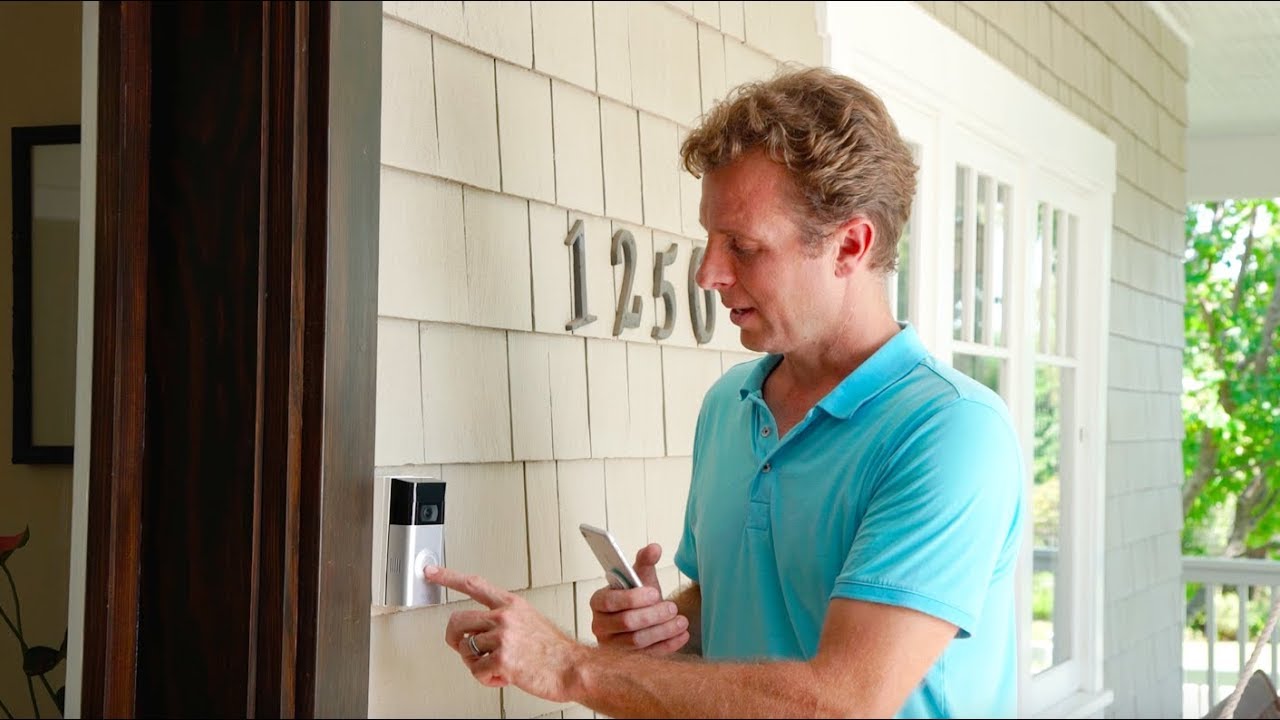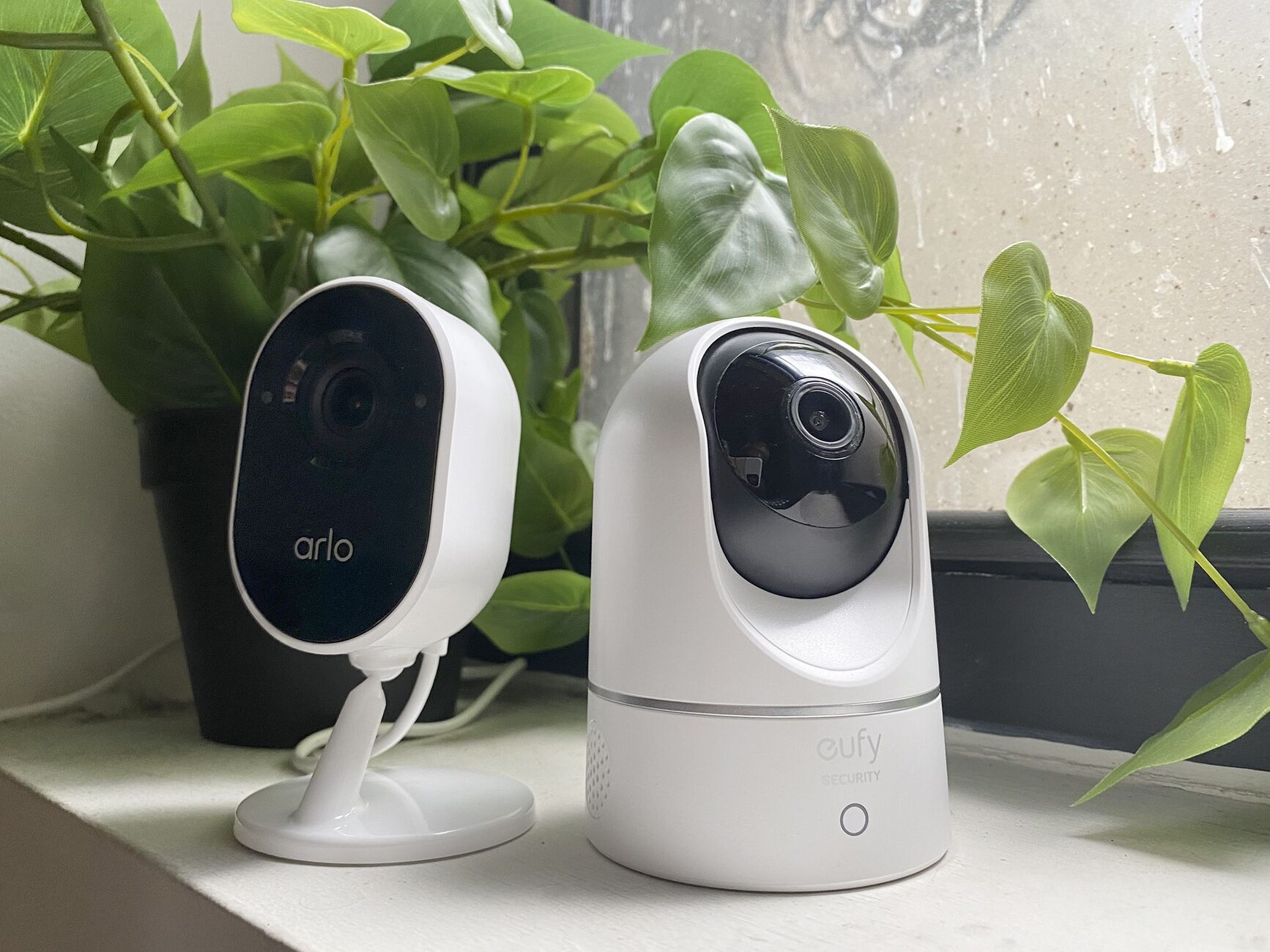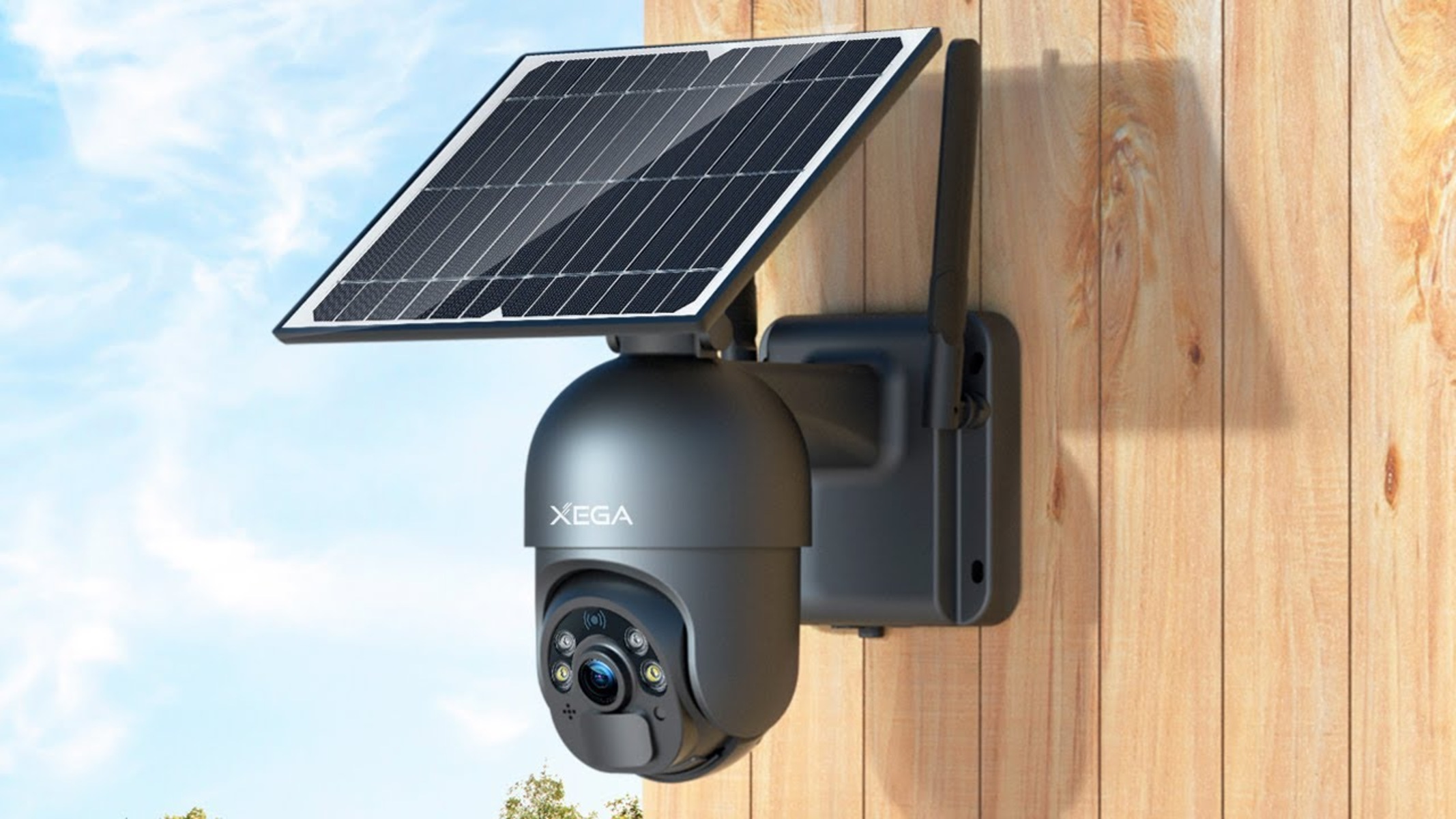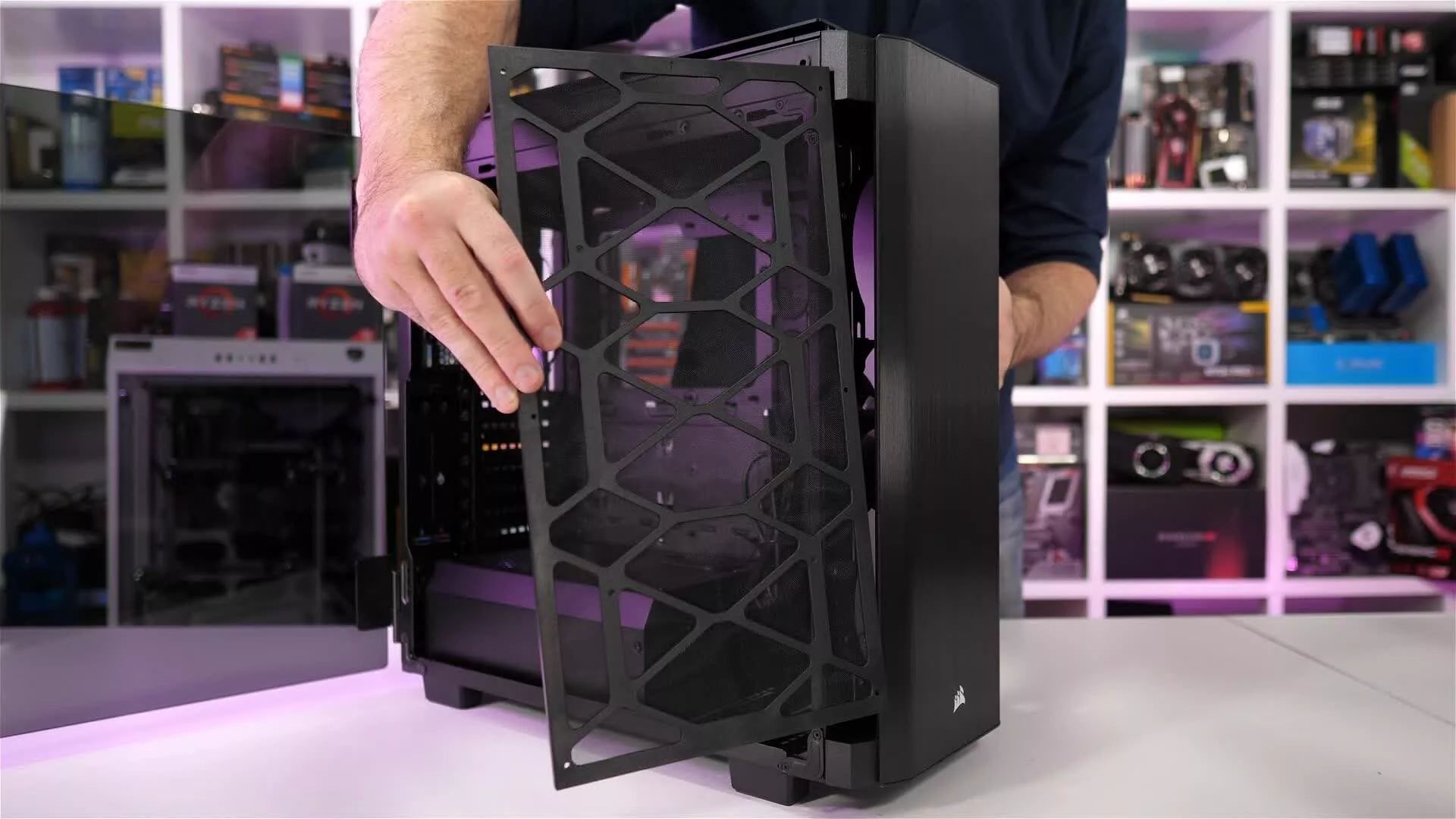Introduction
Welcome to the world of home security cameras. With advancements in technology, home security cameras have become an essential tool for protecting our homes and loved ones. Whether you’re looking to deter criminals, monitor your property, or simply gain peace of mind, placing security cameras strategically around your home is crucial.
However, not all areas of your home require the same level of surveillance. Each home is unique, with varying layouts, entrances, and potential areas of vulnerability. In this article, we’ll explore the top ten locations to place home security cameras, ensuring comprehensive coverage and maximum security for your property.
Keep in mind that the specific placement of your cameras will depend on factors such as your home’s layout, the locations of entry points, and your individual security needs. The suggestions provided here are general guidelines, but it’s crucial to assess your home’s specific vulnerabilities and adjust accordingly.
Now, let’s dive into the various areas of your home that should be prioritized when it comes to camera placement.
Front Door
Your front door is often the primary point of entry for intruders. Placing a security camera here is essential for capturing any suspicious activity or potential break-ins. It allows you to monitor who is coming and going from your property, providing valuable evidence in case of an incident.
When positioning a camera at the front door, aim to cover the entire entryway and porch area. This ensures that you capture not only faces but also any packages or items left at your doorstep. Consider installing a camera with motion detection capabilities, as it will only activate when someone approaches, saving storage space and making it easier to review footage.
Choose a camera with good low-light performance or invest in additional lighting for optimal visibility at night. This will help maintain a clear image even in challenging lighting conditions.
Mount the camera at a height that provides a clear view of any individuals approaching the door. Keep in mind that it should be positioned out of reach, preventing tampering or damage by potential intruders.
If your front entrance has multiple points of access, such as a walkway or driveway leading to the door, consider placing additional cameras to cover these areas for comprehensive coverage.
Remember to regularly check and clean the camera lens to ensure clear and sharp image quality. Additionally, choose a camera that is weather-resistant to withstand the elements and ensure its longevity.
The front door camera acts as a deterrent to potential intruders and provides a sense of security for you and your family. It allows you to monitor arrivals and departures, keeping you informed about any unusual or suspicious activity around your home’s main entry point.
Next, let’s move on to the backyard – an area that should not be overlooked when it comes to home security camera placement.
Backyard
Your backyard is often a vulnerable area of your property, making it important to have security cameras installed to monitor any potential threats or activity. Whether it’s protecting your outdoor living space, children’s play areas, or valuable items like bicycles or gardening equipment, a well-placed camera can help deter intruders and provide evidence in case of a break-in.
The ideal placement for a backyard security camera depends on the size and layout of your yard. However, there are a few key areas that should be considered when positioning your cameras.
First, focus on covering entrances and exits from the backyard. This includes access points such as gates, fences, and doors leading into the house or other structures. By monitoring these areas, you’ll be alerted to any unauthorized entry or suspicious activity.
In addition to entrances, consider placing cameras to cover high-value or high-traffic areas in your backyard. This could be a patio, outdoor kitchen, or storage shed. By capturing footage of these areas, you’ll have a better chance of identifying potential thieves or vandals.
When positioning backyard cameras, it’s important to consider the camera’s field of view and range. Choose cameras that offer wide-angle lenses or have the ability to pan and tilt, ensuring comprehensive coverage of the entire area.
If your backyard has limited lighting, consider investing in outdoor cameras with infrared or night vision capabilities. These features enable clear recording and monitoring even in low-light conditions, such as during the nighttime.
Finally, make sure to place your cameras out of reach and in a location where they won’t be easily tampered with or blocked by objects such as trees or bushes. Mounting cameras higher up can provide a wider view and reduce the risk of interference or damage.
Your backyard is often an extension of your living space, and it’s essential to secure it just as you would your indoor areas. By strategically placing security cameras in your backyard, you can protect your property, deter potential intruders, and have peace of mind knowing that you can monitor any activity from the comfort of your home.
Next, we’ll discuss the importance of placing security cameras in another critical area – the driveway.
Driveway
Your driveway is one of the primary access points to your property, making it an important area to monitor with security cameras. Whether you’re concerned about potential vehicle break-ins, package theft, or unauthorized vehicles entering your property, placing cameras in the driveway can provide valuable surveillance.
When positioning security cameras in the driveway, consider covering the entire length of the driveway to capture any approaching vehicles. This includes both the entrance and exit points. By doing so, you’ll have a record of any vehicles coming and going, allowing you to identify any suspicious activity or unauthorized access.
Cameras in the driveway can also help deter thieves or vandals. The presence of visible cameras can act as a warning sign to potential intruders, deterring them from targeting your property. Additionally, if an incident does occur, having video evidence can be invaluable for insurance claims or legal proceedings.
It’s essential to ensure that your driveway cameras have a high enough resolution to capture clear and identifiable images, especially the license plate numbers of vehicles. Consider installing cameras with features like optical zoom or license plate recognition capabilities for enhanced surveillance.
When mounting driveway cameras, place them at an optimal height and angle to capture the action effectively. Angle them downward slightly to avoid glare from headlights and ensure the best possible recording quality.
If your driveway has limited lighting during nighttime, choose cameras with built-in infrared or night vision capabilities. This allows for clear monitoring even in low-light conditions. Make sure to test the camera’s performance in various lighting conditions to ensure optimal coverage.
Lastly, remember to keep your driveway cameras well-maintained and regularly clean the lenses to prevent any obstruction or reduced image quality. Additionally, choose cameras that are weather-resistant and can withstand outdoor elements such as rain, dust, and extreme temperatures.
Placing security cameras in your driveway provides an extra layer of protection for your property and vehicles. By monitoring this crucial access point, you can deter potential intruders and vehicle thefts, as well as have documented evidence in case of any incidents.
Next, we’ll move on to discussing the importance of securing another critical area of your home – the garage.
Garage
Your garage is not just a space for parking your vehicles but also a potential entry point for intruders. It is crucial to have security cameras installed in the garage to protect not only your vehicles but also any valuable tools, equipment, or other items stored inside.
When positioning security cameras in the garage, consider placing them near entrances and windows to capture any unauthorized access. This includes the garage door, side doors, and any windows that can be easily accessed from the outside.
If your garage has multiple entrances, such as a pedestrian door and a vehicle door, it is recommended to place cameras to cover each of these access points. This ensures comprehensive monitoring of all potential entryways.
One important aspect to consider when installing cameras in the garage is lighting. Ensure that the area is well-lit or install additional lighting to improve visibility and enhance the quality of recorded footage. You may also consider using cameras with built-in infrared or night vision capabilities to capture clear images in low-light conditions.
Position the cameras at an angle that covers the entire garage space and aims towards the doors and windows. This allows for maximum coverage and helps capture any suspicious activity or individuals attempting to gain access to the garage.
It’s important to note that if you have valuable vehicles or other high-value items stored in your garage, you might want to consider additional security measures such as motion sensors or an alarm system. These can work in conjunction with the security cameras to provide a comprehensive security solution.
Regularly check the camera positioning and make sure they are not obstructed or covered by objects, debris, or vehicles. Clean the lenses regularly to maintain clear image quality and ensure that the cameras are functioning properly.
By installing security cameras in your garage, you can closely monitor any activity and potential threats to your vehicles and belongings. This provides an added layer of security to your home and helps deter intruders from targeting your garage.
Next, we’ll move on to discussing the importance of securing the windows in your home.
Windows
Windows are vulnerable entry points that burglars often target. Therefore, it is crucial to have security cameras strategically positioned to monitor these areas and deter potential intruders.
When placing security cameras to cover your windows, consider focusing on ground-level windows, as they are typically the most accessible. These include windows in living rooms, bedrooms, and other areas where valuable items may be on display.
Start by identifying the windows that are most likely to be targeted by potential intruders. These might be windows that are hidden from view, easily accessible, or located in secluded areas. Placing cameras to cover these windows ensures that any activity or attempts to break-in will be captured and recorded.
When positioning cameras for window surveillance, aim to provide a clear and wide view of the entire window area. This includes both the inside and outside of the window, as it allows you to monitor any suspicious activity happening both indoors and outdoors.
If you have multiple windows in a room, consider installing cameras that cover multiple windows simultaneously. This helps reduce the number of cameras needed while still providing comprehensive coverage.
Ensure that the cameras are mounted at an angle that minimizes glare from sunlight or indoor lighting. This helps maintain clear image quality and prevents any obstructions that may hinder the camera’s view.
Additionally, consider using cameras with motion detection capabilities near windows. This feature triggers the camera to start recording when motion is detected, conserving storage space and making it easier to review important footage.
Keep in mind that privacy can be a concern when placing cameras to monitor windows, especially if your neighbors’ properties are in close proximity. Be mindful of any local laws or regulations regarding privacy and ensure that your cameras do not invade the privacy of others.
Securing your windows with security cameras provides an extra layer of protection for your home. By monitoring potential entry points, you can deter burglars and have valuable evidence in the event of a break-in.
Next, we’ll discuss the importance of placing cameras near side gates as part of your home security strategy.
Side Gates
Side gates are often overlooked when it comes to home security, yet they serve as potential entry points for intruders. Placing security cameras near your side gates can provide vital surveillance and help maintain the integrity of your property.
When positioning cameras to monitor side gates, focus on covering the gate itself and the surrounding area. This includes any pathways or walkways leading to the gate, as well as any adjacent fences or walls.
Consider installing cameras with wide-angle lenses to ensure comprehensive coverage of the entire side gate area. This allows you to monitor any suspicious activity happening in and around the gate.
Mount the cameras at a height and angle that provides clear visibility of the gate entrance and surrounding areas. This ensures that you capture any attempts to tamper with or bypass the gate, as well as the faces of individuals approaching or leaving through the gate.
If your side gates are regularly used, consider investing in cameras with motion detection capabilities. This feature allows the cameras to activate and start recording when motion is detected, preserving storage space and making it easier to review important footage.
Ensure the cameras are weather-resistant and capable of withstanding outdoor elements. Side gates are exposed to the weather, and using cameras specifically designed for outdoor use will ensure durability and longevity.
Positioning cameras near side gates is particularly important if they lead to areas that contain high-value items, such as a backyard or storage area. By monitoring these gateways, you can deter potential intruders and protect valuable assets.
Regularly check the cameras to ensure they are functioning properly and adjust the angles and positions if necessary. Clean the lenses regularly to maintain clear and sharp image quality.
Securing your side gates with security cameras helps maintain the overall security of your property. By closely monitoring these entry points, you can deter intruders and have a record of any suspicious activity.
Next, we’ll discuss the importance of placing cameras in key areas such as stairways for enhanced home security.
Stairways
Stairways are often high-traffic areas in homes, making them an important area to consider when it comes to security camera placement. Whether it’s a staircase leading to upper levels or a basement staircase, installing cameras in these areas can provide valuable surveillance and enhance your overall home security.
When positioning security cameras on stairways, start by identifying the main staircases in your home. These are typically the ones used most frequently by both residents and visitors. Focus on covering the entire staircase, including the top and bottom landings, to ensure comprehensive coverage.
Mount the cameras at a vantage point that captures the entire staircase, aiming for a wide-angle view. This allows you to monitor not only the steps but also the surrounding areas for any suspicious activity.
If there are multiple floors in your home, consider installing cameras at each landing of the staircases. This provides additional coverage and ensures that any movement up or down the stairs is captured.
When it comes to stairways, good lighting is crucial. Ensure that the area is well-lit, either through natural light or proper lighting fixtures, to enhance visibility. Additionally, consider using cameras with low-light or night vision capabilities to monitor the stairways during nighttime or in poorly lit areas.
Position the cameras in a discreet manner, ensuring they do not obstruct the flow of foot traffic on the stairs. This will help avoid accidents and maintain a seamless movement up and down the staircase.
Stairways can also be potential escape routes during emergencies such as fires or intrusions. Placing cameras on the stairways ensures that you have a record of any activity during such incidents, which can be crucial for investigations and insurance claims.
Regularly check the cameras and clean the lenses to maintain clear image quality. Be mindful of any obstructions that may appear over time, such as dust or spider webs.
By installing security cameras on stairways, you can monitor and record any activity in these high-traffic areas of your home. This provides an additional layer of security and helps ensure the safety of your household.
Next, we’ll discuss the importance of securing basements and the benefits of placing cameras in these areas.
Basements
Basements are often neglected when it comes to home security, yet they can be vulnerable areas to potential break-ins or unauthorized access. Placing security cameras in your basement is essential for maintaining the overall security of your home and protecting valuable belongings.
When positioning cameras in the basement, consider covering the entrance or stairway leading to the basement. This ensures that any activity occurring around these access points is captured, providing valuable surveillance and evidence.
If your basement has multiple rooms or areas, prioritize camera placement in high-value areas such as storage rooms, workshops, or utility areas. By monitoring these spaces, you can deter potential thieves and have documentation in case of any theft or damage.
Mount the cameras at a height and angle that provides a clear view of the entire area. This allows you to monitor any movement or activity occurring in the basement space.
Consider using cameras with night vision capabilities in the basement, as these areas tend to have lower lighting conditions. Night vision cameras ensure optimal recording quality even in dark or dimly lit basements.
It is important to ensure that the camera cables and power sources are well-hidden and secured, minimizing any potential for tampering or damage. Additionally, choose cameras that are weather- and moisture-resistant since basements can be prone to humidity and water damage.
Regularly check the cameras to ensure they are functioning properly, and clean the lenses to maintain clear image quality. Also, make sure that the camera footage is stored securely to prevent unauthorized access or tampering.
Securing your basement with security cameras provides an extra layer of protection for your home. By monitoring potential entry points and key areas of the basement, you can deter intruders and have a record of any suspicious activity.
Next, we’ll discuss the importance of placing cameras in key interior areas of your home, such as living rooms, bedrooms, and other common spaces.
Interiors
While securing the exterior of your home is crucial, it’s equally important to have security cameras positioned strategically within the interior spaces. Placing cameras in key areas such as living rooms, bedrooms, and other common spaces provides comprehensive coverage and helps protect your home and loved ones.
When considering interior camera placement, think about the areas that are most frequently used or contain high-value items. Installation locations could include the living room, where valuable electronics and furniture are often found, or bedrooms, where personal belongings are stored.
Position cameras in a discreet manner to maintain privacy while still capturing crucial angles and perspectives. Consider mounting cameras on walls or using compact, inconspicuous models that blend in with the surroundings.
Place cameras strategically to cover main entry points within the home, such as doors leading to the exterior or hallways that connect rooms. These areas are often used by potential intruders and monitoring them provides an added layer of security.
Ensure that cameras have a wide field of view to cover as much of the room as possible. This helps capture any movements or activities, ensuring that no blind spots are left unchecked.
Choose cameras with high-resolution capabilities to capture clear and sharp images of potential intruders and the surrounding area. Additionally, consider cameras with advanced features such as motion detection or facial recognition to enhance surveillance effectiveness.
Keep in mind that it is crucial to respect the privacy of family members and guests. Avoid placing cameras in private areas such as bathrooms or bedrooms without consent. Open communication and clear signage regarding the presence of surveillance cameras can help maintain a sense of privacy and mutual trust within the household.
Regularly check the camera angles and adjust if needed to ensure optimal coverage. Clean the lenses regularly to maintain clear image quality and ensure that the cameras continue to function properly.
Securing the interior of your home with security cameras provides complete coverage and helps protect against potential threats. By monitoring key areas within your home, you can deter intruders and have valuable evidence in case of any incidents.
Finally, let’s discuss the importance of placing cameras in common areas such as hallways, foyers, or open spaces.
Common Areas
Common areas within your home serve as central spaces that connect various rooms and provide access to different parts of the house. Placing security cameras in these areas helps ensure comprehensive surveillance and protects against unauthorized access or suspicious activity.
When it comes to common areas, consider positioning cameras in hallways, foyers, or open spaces that are frequently used for movement throughout the home. These areas act as key pathways and provide access to other rooms.
Mount cameras strategically to cover the entire length of the hallway or foyer, aiming for a wide field of view. This ensures that any movement or activity in these central areas is captured and recorded.
Common areas often have a high volume of foot traffic, making them potential spots for unauthorized individuals to move around. By monitoring these spaces, you can deter would-be intruders and have valuable evidence in case of any incidents.
Place cameras at a height and angle that maximizes their coverage while considering the flow of foot traffic. This helps minimize obstructions and ensures a clear line of sight for capturing important details.
In addition to hallways and foyers, consider placing cameras in common rooms such as living rooms or dining areas. These areas often contain valuable items and are frequently used by both residents and visitors.
Choose cameras that can withstand different lighting conditions, as common areas may have varying levels of natural and artificial light throughout the day. Cameras with adjustable exposure settings can help ensure clear and well-lit footage at all times.
Regularly check and clean the cameras to maintain clear image quality. Conduct regular equipment checks to ensure that the cameras are functioning properly and that the recorded footage is securely stored.
Monitoring common areas with security cameras allows you to maintain a comprehensive view of your home and detect any suspicious activity. By placing cameras strategically in these key areas, you can enhance the security of your home and protect against potential threats.
Securing your home’s common areas is the final step in establishing a robust security camera system. By monitoring these central spaces, you can have peace of mind and be prepared to handle any potential security issues.
Conclusion
Placing home security cameras in strategic locations is a crucial step in protecting your home, loved ones, and valuable possessions. By following these guidelines and considering the specific layout and vulnerabilities of your home, you can ensure comprehensive coverage and enhance your overall security.
Throughout this article, we have explored the top ten areas to consider when placing security cameras. From the front door to the backyard, driveway to the garage, windows to side gates, stairways to basements, and finally, common areas, each location plays a vital role in maintaining a secure environment.
When positioning security cameras, it’s important to consider factors such as field of view, lighting conditions, camera features, and privacy concerns. By using cameras with motion detection, night vision, and high-resolution capabilities, you can maximize the effectiveness of your surveillance system.
Regular maintenance, including cleaning camera lenses and checking for obstructions, is essential to ensure clear image quality and optimal performance. Additionally, ensure that cameras are weather-resistant to withstand outdoor elements and protect against tampering.
Remember, the specific camera placement within these areas will vary based on the layout and individual security needs of your home. Assess your property’s vulnerabilities and adjust the camera positions accordingly to create a tailored and robust security system.
By implementing a well-designed security camera system, you can deter potential intruders, monitor for suspicious activity, and have documented evidence in case of an incident. This provides peace of mind and enhances the overall protection of your home.
Investing in home security cameras is a proactive measure that goes a long way in safeguarding your property and ensuring the safety of your loved ones. Stay vigilant, stay informed, and stay secure.







